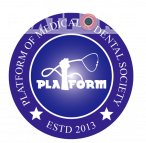USMLE- A Goldmine for Foreign Medical Graduates
What is USMLE ?
The United States Medical Licensing Examination ® (USMLE®) is a
three-step examination for medical licensure in the United States
and is sponsored by the Federation of State Medical Boards (FSMB)
and the National Board of Medical Examiners (NBME).
What are the three-steps?
Step 1 assesses the examinee’s understanding and ability to apply
important concepts of the sciences basic to the practice of
medicine, with special emphasis
on principles and mechanisms underlying health, disease, and
modes of therapy.
Step 2 assesses the examinee’s ability to apply medical knowledge,
skills, and understanding of clinical science essential for the
provision of patient care under supervision, with an emphasis on
health promotion and disease prevention. Step 2 focuses on
principles of clinical sciences and basic patient-centered skills that
provide the foundation for the safe and competent practice of
medicine.
The clinical skills examination is a separately administered
component of Step 2 and is referred to as Step 2 Clinical Skills, or
Step 2 CS.
The computer-based, multiple-choice component of Step 2 is
referred to as Step 2 Clinical Knowledge, or Step 2 CK.
USMLE Step 2 CS is administered at five regional test centers in the
United States.
Step 3 assesses the examinee’s understanding of biomedical and
clinical science essential for the unsupervised practice of medicine,
with an emphasis on patient management in ambulatory settings.
Step 3 provides a final assessment of physicians assuming
independent responsibility for delivering general medical care.
COMPUTER-BASED TESTING (CBT)
Parts of the USMLE are administered by computer. Prometric
provides scheduling and test centers for the computer-based
components of the USMLE. Step 1 and Step 2 Clinical Knowledge
(CK) are given around the world at Prometric Test Centers (PTCs).
Step 3 is given at PTCs in the United States and its territories only.
Who can sit for STEP 1, STEP 2 CK, AND STEP 2 CS examination?
To be eligible, you must be in one of the following categories at the
time you apply and on your test day:
A medical student officially enrolled in, or a graduate of, a medical
school outside the United States and Canada who meets the
eligibility criteria of the ECFMG.
See eligibility criteria here- “http://www.ecfmg.org/certification/ eligibility-for-examination.html
Who can sit for STEP 3 examination?
To be eligible for Step 3, prior to submitting your application, you
must: pass Step 1, Step 2 CK, and Step 2 CS, obtain certification by
the ECFMG.
Which medical school/college student can give USMLE?
A physician who received his or her basic medical degree or
qualification from a medical school outside the United States and
Canada may be eligible for certification by the ECFMG if the medical
school and graduation year are listed in
the International Medical Education Directory ( IMED).
Search your medical school here- https://imed.faimer.org/
SEQUENCE OF STEPS
If you meet the eligibility requirements, you may take Step 1, Step 2
CK, and Step 2 CS in any sequence. But its recommended by many
that medical students outside of USA should take Step 1 first and
then Step 2 CK and CS.
It require that the dates of passing the Step 1, Step 2, and Step 3
examinations occur within a seven-year period; and allow no more
than six attempts to pass each Step or Step Component without
demonstration of additional educational experience acceptable to
the medical licensing authority.
RETAKES
You may take the same examination no more than three times
within a 12-month period. Your fourth and subsequent attempts
must be at least 12 months after your first attempt at that exam and
at least six months after your most recent attempt at that exam.
TEST LENGTHS AND FORMATS
Step 1 is a one-day examination. You must complete testing within
8 hours. The testing day includes 322 multiple-choice items divided
into 7 blocks of 46 items; 60 minutes are allotted for completion of
each block of test items. There is a
maximum of 7 hours of testing. There is also a minimum of 45
minutes of break time and a 15 minute optional tutorial.
Step 2 CK has approximately 350 multiple choice test questions,
divided into eight 60 minute blocks, administered in one nine-hour
testing session. The number of questions per block on a given
examination form will vary but will not exceed 44.
Step 2 CS has 12 patient cases, administered in a testing session of
approximately eight hours. You will have 15 minutes for each
patient encounter and 10 minutes to record each patient note. If you
use less than 15 minutes for the patient encounter, the remaining
time will be added to the time you have to record the patient note.
Step 3 has approximately 470 multiple-choice test questions,
divided into 45- and 60 minute blocks, each containing 35 to 50
questions. In addition, there are between 9 and 12 computer based
case simulations. Each simulation is allotted
10 or 20 minutes of maximum real time. Step 3 is administered in
two eight-hour testing sessions.
Test Contents
Step 1
Step 1 includes test items in the following content areas:
Anatomy,
Behavioral sciences,
Biochemistry,
Microbiology,
Pathology,
Pharmacology,
Physiology,
Interdisciplinary topics, such as nutrition, genetics, and aging.
Step 1 is a broadly based, integrated examination. Test items
commonly require you to perform one or more of the following tasks:
interpret graphic and tabular material,
identify gross and microscopic pathologic and normal
specimens,
apply basic science knowledge to clinical problems.
Step 1 classifies test items along two dimensions: system and
process , as shown in Step 1 Specifications .
System**
25%–35% General principles
65%–75% Individual organ systems
hematopoietic / lymphoreticular
nervous/special senses
skin/connective tissue
musculoskeletal
respiratory
cardiovascular
gastrointestinal
renal/urinary
reproductive
endocrine
immune
Process
20%–30% Normal structure and function
40%–50% Abnormal processes
15%–25% Principles of therapeutics
10%–20% Psychosocial, cultural, occupational, and
environmental considerations
STEP 2 CK
Content Outlines
General Principles
Infectious and Parasitic Diseases
Neoplasms
Immunologic Disorders
Diseases of the Blood and Blood-forming Organs
Mental Disorders
Diseases of the Nervous System and Special Senses
Cardiovascular Disorders
Diseases of the Respiratory System
Nutritional and Digestive Disorders
Gynecologic Disorders
Renal, Urinary, and Male Reproductive Systems
Disorders of Pregnancy, Childbirth, and the Puerperium
Disorders of the Skin and Subcutaneous Tissues
Diseases of the Musculoskeletal System and Connective Tissue
Endocrine and Metabolic Disorders
Congenital Anomalies
Conditions Originating in the Perinatal Period
Symptoms, Signs, and Ill-defined Conditions
Injury and Poisoning
STEP 2 CS
Step 2 CSexam will include twelve patient encounters . Examinee will
have 15 minutes for each patient.
Learn more about step 2 CS- http://usmle.org/step-2-cs/#format
Step 3
Content Outlines
General Principles
Disorders of the Nervous System and Special Senses
Disorders of the Respiratory System
Cardiovascular Disorders
Nutritional and Digestive System Disorders
Behavioral/Emotional Disorders
Disorders of the Musculoskeletal System
Disorders of the Skin/Subcutaneous Tissue
Disorders of the Endocrine System
Renal and Urinary Disorders
Diseases/Disorders of the Female Reproductive System
Pregnancy/Labor and Delivery/Fetus and Newborn
Disorders of Blood
Disorders of the Male Reproductive System
Disorders of the Immune System
……
Compiled by-
Dr. Nobel Chowdhury
Chittagong Medical College

